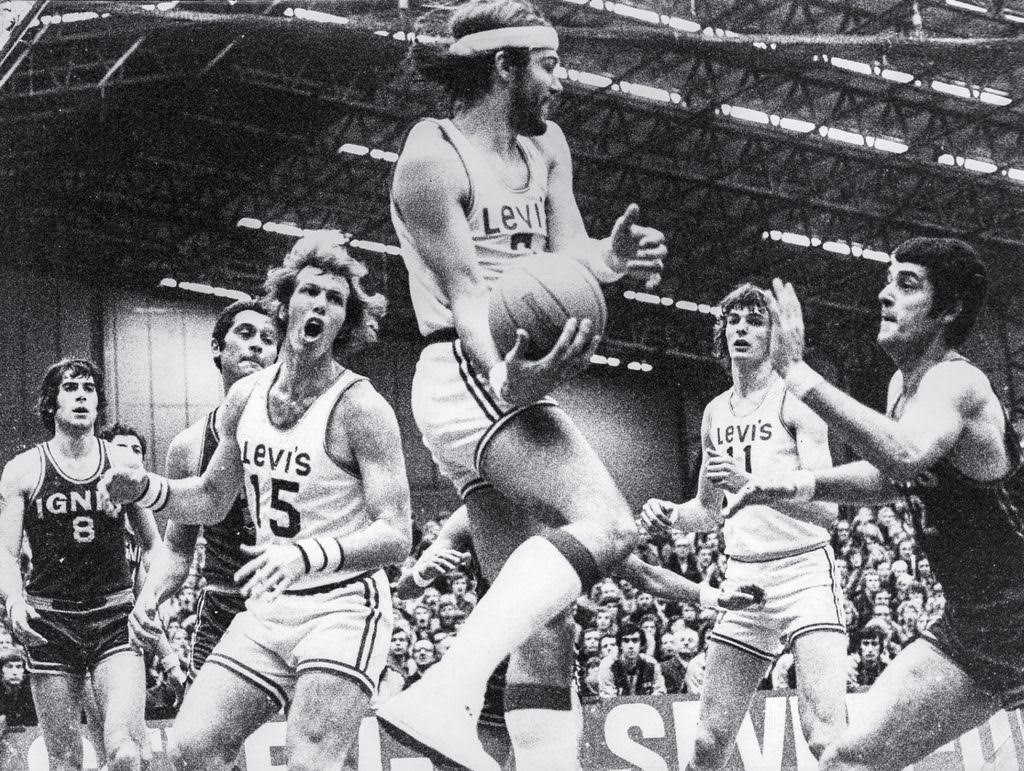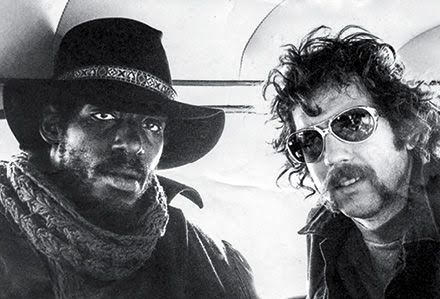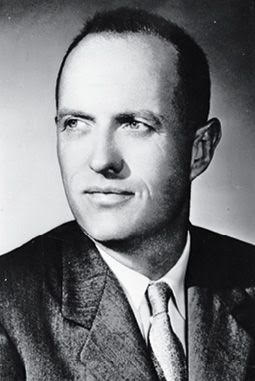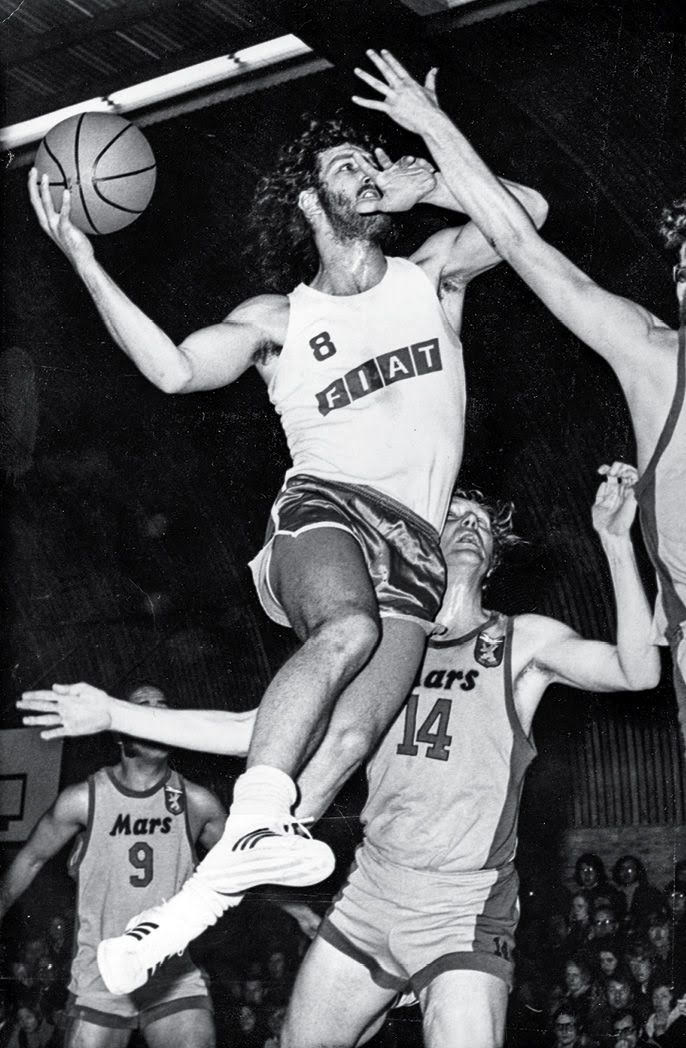Hoops diplomacy, Euro style (Feature)
TweetTHE TOUR: Sarunas, Dirk, Giannis, Luka—Europe has supplied some of the NBA’s biggest names for a generation now. But the man who helped make the Euro Invasion possible is all but forgotten: Jim McGregor, the entrepreneurial American coach who brought basketball across the Atlantic 50 years ago.
By William Drozdiak and Rone Tempest
THEY PLAYED in ancient coliseums, on the deck of an oil tanker off the coast of Ireland and in a 16th-century Venetian religious school accessible only by gondola. .jpg)
They dodged 50-drachma coins heated with cigarette lighters and thrown by rabid Greek fans. They battled powerful Soviet and Yugoslav teams at the height of the Cold War. They were at the vanguard of the U.S. basketball colonisation of Europe, the free-spirited, barnstorming young knights of the roundball who played on teams put together by iconoclastic coach and promoter Jim McGregor a half century ago.
Today’s NBA is buoyed by European players, including the likely MVP, Bucks forward Giannis Antetokounmpo (Greece), and Rookie of the Year, Mavericks guard Luka Dončić (Slovenia).
Nuggets centre Nikola Jokić (Serbia) was an All-Star; Jazz centre Rudy Gobert (France) should have been.
The previous generation of imports included the great Dirk Nowitzki (Germany), four-time champion Tony Parker (France) and the 7-foot Gasol brothers, Marc and Pau (Spain).
In the 1990s, Lithuanian legend Sarunas Marciulionis introduced a move—the Euro step—that is now in widespread use on drives to the hoop.
HARD TO HANDLE: The talent and size of players such as Gerhard Schreur (15) and Bill More helped McGregor’s teams compete with even the toughest Communist squads of the era. (Pic courtesy Bill More).
But largely forgotten are the early missionaries who took the game to every corner of the continent, winning converts with their stylish, fast-paced play.
“While basketball was a secondary sport in most countries at the time, it epitomised the glamour and excitement of an American culture that was working its way into the fabric of countries everywhere,” recalls former Cavaliers executive Tom Chestnut, who was on several McGregor teams after playing at Princeton in the late 1960s.
“When ‘the Tour’ came to town, people got to see their hometown team matched against a team from the country that had invented the game and produced the best players in the world. We may not have been Oscar Robertson or Wilt Chamberlain, but we were still the real deal in their eyes.”
Between 1967 and ’77, McGregor took more than 600 young Americans to Europe, Central and South America, Australia and Asia. Most had been the best players on their college squads, and some were just a cut below the NBA. He got recommendations on talent from hoops luminaries such as Bill Sharman, the Boston Celtics great who knew McGregor from USC, and UCLA coach John Wooden, whose teams were so loaded with talent that some good players were often overlooked.
When players were cut from the NBA, McGregor invited them to tryout camps either in Los Angeles or the Catskills, where he had a room-and-board agreement with Kutsher’s resort. He especially looked for taller players, centres and forwards, that he could more easily sell to European clubs.
McGregor’s rosters had to be constantly replenished when players signed contracts with clubs; on a single tour his team featured as many as 30 players.
McGregor’s teams were branded the Gulf Oil All-Stars, the TWA All-Stars, the Gillette All-Stars, the Coca-Cola All-Stars, the Pepsi All-Stars and finally, in their fullest flowering, the Levi’s All-Stars.
In one tournament they switched jerseys and played as two teams.
“I believe Jim and his touring teams represented a huge step for all the top domestic leagues in Europe, whether in Italy, France or Spain,” says Maurizio Gherardini, a former Italian league and Raptors executive who now heads Fenerbahçe, a Turkish club.
“At that time you didn’t see American teams play,” says Henry Fields, a former U.S. military star and one of the earliest U.S. players in Europe. “They didn’t have NBA games on TV. So those McGregor teams were really the only American basketball you saw. There was a crowd everywhere they went. They were celebrities. It was fantastic.”
McGregor sometimes bolstered attendance by stringing banners in various languages across streets, announcing that THE WORLD’S GREATEST BASKETBALL TEAM was about to hit town.
Future Italian basketball star Roberto Brunamonti was 14 when he first saw a McGregor team.
“They set up a basketball court under the beautiful Orvieto cathedral,” Brunamonti recalls. “I was so excited to see these amazingly good American players live. My passion for basketball was already high, but this made it even greater, as I think it did with so many other guys more or less my age in Italy.”
For McGregor, who had already spent more than a decade coaching eight national teams on three continents, barnstorming was a lucrative business opportunity.
The European sports club owners were looking to build up their basketball teams but had little knowledge of American players. McGregor’s entrepreneurial genius was in showcasing these touring players and then selling them for a commission to the European owners, many of whom he knew from his previous international experience. Says Gherardini, who followed the American teams as a young man in Italy: “For a time, Jim was the only available means that clubs had to get a quality American player.”
Not all of McGregor’s recruits loved the experience. He paid them just $5 a day, and the hard travel was not for everyone. One player McGregor summoned to Europe never got beyond the Rome airport where, instantly homesick, he caught a return flight home. Some reported intense cravings for hamburgers and ketchup. There was considerable confusion and speculation about the function and use of bidets. And cheese for dessert?
COWBOYS: The 6' 9" (206cm) Ron Sanford, left, was the clotheshorse on the team, wearing leather pants and capes.
But those who stuck it out were compensated well (the bigger teams paid up to $60,000 a year) once they signed with a European club, including housing and a car.
Many stayed on as coaches, planting the seeds of American basketball across the continent.
“All of us in this first migration wanted to continue to play,” recalls Carmine Calzonetti, a former St. John’s point guard. “McGregor gave us the platform, the tour and the opportunity to stay, by finding us teams.”
Calzonetti played and coached eight years in France before returning to work as an assistant under Lou Carnesecca at his alma mater. He then went to Wall Street, where he was a partner with the Cantor Fitzgerald financial firm.
“Americans started to penetrate the European market in 1968 at higher numbers,” says Calzonetti.
“Once one [club] team had one, the others followed. Usually each American scored in the 30s or 40s and neutralised each other so the team with the best local players often won.”
BORN IN Portland in 1921, McGregor played basketball in high school, but he was mostly known as a long-distance swimmer and runner. He went to USC on a partial track scholarship and then served in the Marines during World War II.
From 1950 to ’53, McGregor won 76 games and won two conference titles as the coach at Whitworth University in Spokane but was fired, he said later, because administrators claimed he failed to live up to the school’s Christian values.
This led to 12 years on the road as he coached the national teams of Italy, Turkey, Morocco, Greece, Argentina, Sweden, Austria, Peru and the Central African Republic.
He returned to the U.S. for the 1965–66 season, going 4–22 at New Mexico State before he was again fired. It was then that McGregor came up with the idea of getting companies to sponsor American teams to play in Europe.
McGregor knew there was untapped demand in Europe for American players, who were universally recognised as the best in the world. It helped that he was adept at learning new languages—he spoke Spanish, German, French and Italian—and skilled at managing complicated foreign travel on the cheap. When lodging was not covered by one of the sponsors, he housed players in army barracks, school dorms and some of the worst lodgings in Europe.
“The People’s Hotels in Communist Yugoslavia still haunt my dreams,” says former Virginia forward and McGregor veteran John Gidding.
TWA provided stacks of vouchers to pay for round-trip airfare. Gulf Oil arranged for each player to have bespoke travel clothes.
“Double-breasted blue blazers and two pairs of grey flannel slacks,” recalls George Dalzell, who was a star at Colgate. “I’d never had anything custom fitted before.”
Later players would refer to the Gulf Oil years (1967 to ’69) as the “Blazer teams.” They seemed so wholesome they might easily have been confused with the Fellowship of Christian Athletes. But that look would not last long.
McGregor’s later barnstorming athletes were children of their era, nurtured by the Beatles and Rolling Stones and tormented by the Vietnam War. They were long-haired, free-spirited, Woodstock worshippers in bell-bottom trousers, beads and peace symbol pendants.
“A cavalcade of basketball hippies,” says former UCLA guard Bill Sweek, who joined the McGregor tour after serving in the Peace Corps in Tunisia. Chestnut attended Woodstock; his shirtless, ripped, 6' 7" torso can be seen towering over the crowd in the famous documentary film poster of the event.
By the time McGregor landed the Levi’s sponsorship in the early 1970s, the team look had evolved into something closer to a hippie commune or a rock band.
“Levi’s had us in crushed velvet shirts with medallions,” says Dalzell.
“Levi’s wanted that mod look.” In 1971 and ’72, the team traveled in a 12-passenger Fiat van that they painted with psychedelic designs and dubbed the Magic Bus, after the song by The Who.
During a night out at Maxim’s, in Paris, diners approached the team asking for autographs.
“Maybe because some of us had guitars, they thought we were a rock band instead of a basketball team,” says Ron Sanford, a Brooklyn native who played at New Mexico. “I remember I was trying out a Fender bass. They’d ask, ‘Who are you?’ and we’d say, ‘We’re playing with Jethro Tull, we’re backup.’ It was all part of that crazy stuff we used to pull on people over there.”
But they were a basketball team and by all accounts a very good one, no matter what logo they wore. In the course of a summer McGregor (pictured) would schedule up to 75 games across Europe, including tournaments in Italy, where they held their own against the tough Soviet and Yugoslav teams of that era.
The only difficulty came when a player would show up wearing a Coca-Cola jersey for a game sponsored by Pepsi or when the Gillette players forgot to shave.
When they didn’t have games, the team would conduct clinics that McGregor set up in schools where the players could get free meals. Many of the guys have indelible memories of folding their long limbs beneath tiny lunch tables in Sweden, where they often did the clinic-for-lunch routine.
Kenny Grant, a street-savvy New Yorker, was the ringleader and manager when McGregor was away. In his 1978 autobiography, Called for Travelling, McGregor recounted his first meeting with the long-haired Grant, who said he played at Saint Peter’s College. “Son,” McGregor replied, “you look like St. Peter himself.”
Grant would have a distinguished career in Europe as a player, coach and agent, but his looks almost cost him his place on the team.
“McGregor was an ex-Marine and had a hard time taking me or Mike Rowland [who had played for St. John’s] on the team,” Grant recalls.
“He knew we could play, but we didn’t look like what he thought basketball players should look like.”
Ron Sanford, who later played for the ABA’s Dallas Chaparrals, was the clotheshorse on the team—leather pants, capes, leather outback hats, sometimes a beret worn askew atop his imposing 6' 9" frame.
Former Oregon State player Bill More was the team lothario who earned the nickname Midnight Rambler because of his adventures with a group of Danish teachers in Zagreb, Yugoslavia.
John Gidding, a 6' 6" forward who had played for Virginia, made a splash by moving to an apartment in Paris with his French, fashion-model girlfriend, and parading his two giant Russian wolfhounds (Tzaroff and Ulianoff) on the streets of Montmartre. Gidding, who continued to play and coach in Europe, now lives in Luxembourg.
Gary (Country) Suiter was the team bad boy—a pool hustler and cardsharp—who was once thrown in a Yugoslavian jail for failing to pay for a long-distance hotel phone call to his exotic dancer girlfriend in Texas.
Steve Rippe, a former UC Santa Barbara player who is now a banker in San Diego, has a vivid memory of the 6' 9" Suiter loping down the cobblestone streets of Zagreb pursued by a posse of tiny European police cars with their klaxons blaring.
Suiter played at Midwestern State University in Wichita Falls, Texas, and for the Cavaliers, in 1970–71. He once missed a team meeting in Cleveland because he was at a concession stand ordering food. (In 1982, Suiter would be murdered near Albuquerque, after an argument over a $275 gambling debt.)
Fran O’Hanlon, a brilliant playmaker at Villanova who now coaches at Lafayette, was compared at the time with LSU star Pete Maravich because of his ballhandling skills. He led the McGregor team’s elaborate Harlem Globetrotter–style warmup routine that entertained audiences who were accustomed to the stiff, regimented play that characterised European basketball at the time.
DRESSED FOR SUCCESS: McGregor’s early teams were especially clean-cut, with sponsor Gulf Oil providing blue blazers and flannel slacks for each player. (Pic courtesy George Dalzell).
All this exposure through travel and teaching made McGregor’s players celebrities, with their own set of groupies. Fields and four other players landed acting roles as heavies in the 1972 Jean-Paul Belmondo movie La Scoumoune (The Jinx).
Prince Rainier of Monaco and his young son, Crown Prince Albert II, were devoted fans of the McGregor teams.
The most unusual groupie was a wealthy 60-year-old former French movie actress the players called Madame Reine. For several months in Italy and France in 1972, Madame Reine—whose maiden name was Christiane Yvette Mangeard—accompanied the team wherever it played, sometimes towelling the players down during breaks in the game.
“She called the players her Sonny Boys,” says Mary Peterson, the ex-wife of former McGregor player Ken Gardner. Peterson was one of several wives or girlfriends who spent time on the tour.
She remembers Madame Reine putting her and Gardner up in the luxury Bristol Hotel in Paris and giving them a $200 cheque with instructions to “buy your wedding dress with this money.”
For the women on the tour, Madame Reine was a welcome contrast to McGregor, whom Peterson remembers as “profane” and says that he was always checking out the players’ female companions.
“He was a dirty old man,” says Ellen King, Bill More’s ex-wife.
As actress Christiane Isola, Madame Reine had small roles in several forgettable French movies. On the tour with her Sonny Boys, she moved the players to better hotels, treated them to lavish meals in the best European restaurants and hired a celebrity photographer to record the events.
But she also berated McGregor for his stinginess and the way he treated his team. McGregor had enough of the nagging at one game and ordered security police to remove her from the court. But Madame Reine returned only minutes later with the same policemen as her personal escorts, having made a generous donation to their benevolent association.
THERE ARE many, including a number of devoted ex-players, who feel that McGregor, who died in 2013 at 91, is the unsung hero of international basketball and that there ought to be a place for him in a Hall of Fame either in the U.S. or in Europe.
By 1970, McGregor’s near monopoly on placing American players on European teams was ending as other agents had come on the scene and many European team owners had learned how to shop for players on their own.
Competition between agents became fierce, and McGregor was not above dirty tricks.
Former NYU star Jim Signorile played for Real Madrid and for a team in Clermont-Ferrand, France, where he once scored 101 points in a game. Signorile’s agent was fellow New Yorker Richard Kaner, an up-and-coming McGregor rival who would eventually sign more than 500 Americans to European contracts.
“Rich Kaner said he was going to get me a team in Italy, and when it wasn’t working out, I said, ‘What’s the story?’” Signorile says.
Kaner responded that McGregor was “going around telling Italian coaches that I had bad knees.”
“Hell, I’m now 70 and I still don’t have bad knees.”
In fact, Signorile is one of these American basketball pioneers who continues to play basketball in competitive senior leagues. Affectionately dubbed Commish by former teammates, he organises an annual dinner in New York City for Americans who played in Europe, including Grant, O’Hanlon and Calzonetti.
When the gathering was first arranged by literary agent Jay Acton in 1977, it included former professional ballplayers and a handful of New York writers. It was preceded by a basketball game in one of the city’s older gyms.
As legs deadened and vision dimmed for many of the players, the basketball part of the reunion ended in 2009 with a sad note from the Commish about the “inexorable march of time.”
But the annual dinner continues. Each January, the knights of the roundball gather at Tony’s di Napoli restaurant in midtown Manhattan to raise a glass to Jim McGregor: the irascible coach who brought unique adventures into their lives by recruiting them to serve as basketball missionaries.


